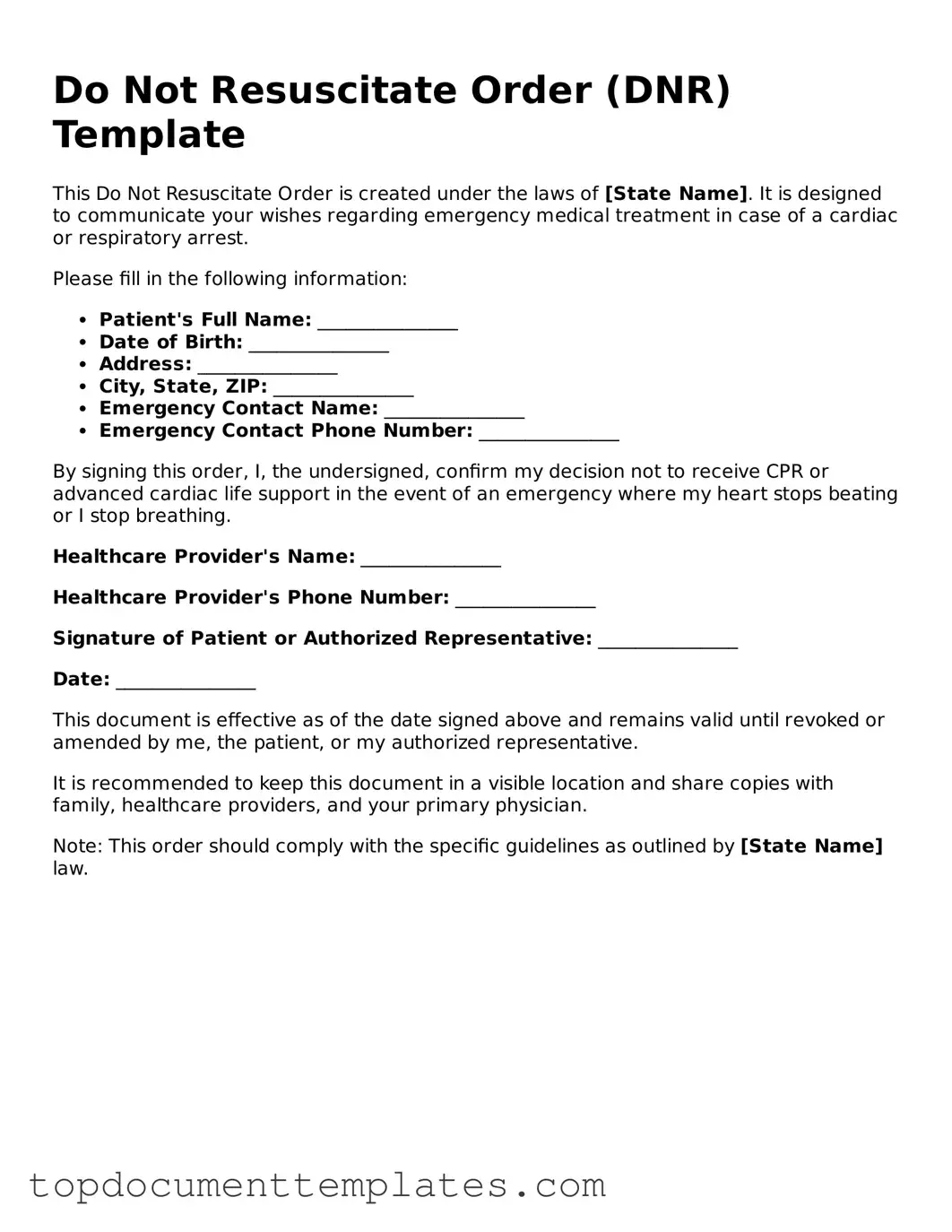A Do Not Resuscitate Order (DNR) form is a crucial document that allows individuals to express their wishes regarding medical treatment in the event of a life-threatening situation. This form is particularly significant for those with serious health conditions or for individuals who wish to avoid aggressive medical interventions that may not align with their personal values or quality of life considerations. It typically includes essential information such as the patient's name, date of birth, and a clear statement indicating the desire not to receive cardiopulmonary resuscitation (CPR) or other life-saving measures in the event of cardiac arrest or respiratory failure. The DNR form must be signed by the patient or their legal representative, along with a physician's signature, to ensure that it is legally valid and respected by medical personnel. Understanding the implications of this order is vital, as it directly impacts the care a patient will receive during critical moments. By discussing preferences with family members and healthcare providers, individuals can ensure that their wishes are honored and that they receive care that reflects their values and desires.
